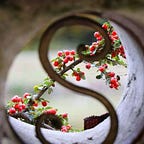Anaphora Vs Epiphora (Literary Devices): Significance and Differences
What do you mean by “Anaphora” literary device?
Anaphora is a literary device that is formed by repeating words at the beginning of consecutive or neighbouring lines. In anaphora, the number of these repeating words can vary from one to many. Anaphora is always placed at the beginning of the line (not in between or end of the line). Make sure that line must contain other words after anaphora. In other words, anaphora can be a subset of that whole line, but can’t be the complete line. If these repeating words are placed at the begining of multiple lines, but those are not consecutive in structure, that can’t be considered as anaphora.
What do you mean by “Epiphora” literary device?
Epiphora is a literary device that is exactly opposite of anaphora. Epiphora contain one or many repeating words at the end of consecutive or neighbouring lines. Make sure your lines must have some words placed before epiphora, otherwise that epiphora will be considered as refrains. Epiphora is also known as epistrophe and sometimes epiphora are also called as antistrophe. If these repeating words are placed at the end of multiple lines, but those are not consecutive in structure, that can’t be considered as epiphora.
The basic objective of both anaphora and epiphora is to give emphasis on a particular portion of the sentences, to focus on a particular concept/ idea, make the writing rhythmic, and so on. You must have noticed use of anaphora and epiphora in poetry, songs, speeches and different other forms of literature. These rhetotical deevices are often used to add rhythm to the writing in order to give more artistic dimension.
When both anaphora and epiphora are used simultaneously, that is known as symploce. Hence, symploce can be said as the combination of both anaphora and epiphora.
Examples of “Anaphora”:
#1
In my last poem (Broken Hearted-Neither Lost, Nor Defeated), you can see instances of anaphora (highlighted text).
Broken hearted
Are not the ones who got defeated
Lost and betrayed
Among all
They are the bravest
And strongest
Because…
They dared to love
They dared to live
They dared to express their true feelings
With all evens and odds
They are standing strong, unbreakable
And unblemished
It’s not like they don’t feel the pain
The trauma
Yes, they do
We all do
It’s not like they haven’t screamed
They haven’t cried
They haven’t spent sleepless nights
It’s not like they easily moved on
And healed in a single day
People say…
Time heals everything slowly
Time stitches every wound completely
You have to give time,
A little bit more time
Time to gather all your fragments
Time to arrange them in their proper places
Time to set the glue
Time to seal and heal
Time to evolve
And time to transform
Into a better version
So, give yourself time
Do not bother what others would say
It’s just okay, not to be okay
It’s okay, if you are broken hearted
You are neither lost
Nor defeated
You are the strongest
And bravest
#2
“She Used to Be Mine” by Sara Bareilles
She is imperfect, but she tries
She is good, but she lies
She is hard on herself
She is broken and won’t ask for help
She is messy, but she’s kind
She is lonely most of the time
She is all of this mixed up and baked in a beautiful pie
She is gone, but she used to be mine
Examples of “Epiphora”:
#1
The following stanzas are examples of epiphora (highlighted text).
If I could tell you
Howmuch I love you
You would have stayed with me forever, wouldn’t you?
#2
Flood: A Romance of Our Time (By Robert Penn Warren)
The big sycamore by the creek was gone.
The willow tangle was gone.
The little enclave of untrodden bluegrass was gone.
The clump of dogwood on the little rise across the creek — now that, too, was gone
How to distinguish “Epiphora” from “Refrains”?
A refrain is either a single or a group of phrases/lines that appear repeatedly throughout the poem within a certain interval. The interval depends upon the poetic forms. You can find such instances of refrains in ancient oral poetry.
In case of epiphora, only the last part of the consecutive lines contain repeating words, not the whole sentence is repeated.
Now you guys must have got a clear idea about anaphora and epiphora. Sometimes you can also see slight variations to the structure and uses anaphora and epiphora. I will write about those sometime later. Stay connected to read more interesting blogs.
Thanks for reading.
Original Source: https://nblik.com/article/188797/4675?title=Anaphora-Vs-Epiphora-(Literary-Devices):-Significance-and-Differences
